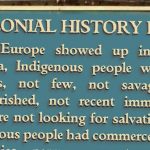Shared Histories (BOOK REVIEW)
By Jane Stevenson
Shared Histories: Witsuwit’en-Settler Relations in Smithers, British Columbia, 1913-1973 (Creekstone Press, 2018) by Tyler McCreary documents an important time in our history and offers a refreshingly honest view of the First Nation and settler relationship: the good, the bad and the heartbreaking.
I was aware of some of this history as I have spent many hours deep in the archival collections of museums throughout northwest British Columbia. I have learned about the graves pushed aside by the Grand Trunk Pacific Railway and the farmland usurped by the Soldier Settlement Board, and I have read about the brave settlers and stoic surveyors who were bold enough to carve out homes in our landscape.
I am so grateful to McCreary for carefully documenting both the Witsuwit’en and settler histories and generously sharing these stories.
The author successfully covers “the intersection of settler dreams and Witsuwit’en reality” between 1913 and 1973 in northwestern British Columbia, from the founding of the railway town of Smithers to a time of more recent memory. While the book focuses on a distinct region, the complex relationship between the First Nations and the settlers that is reviewed and chronicled in careful detail could apply to many areas across Canada.
As a historical researcher and writer, I recognize the need for this history book on our shelves, in our homes and in our collective minds. So much of the history of Indigenous-settler relations is lost as older generations pass away and this book, the merged history of both communities, ensures not only that the stories are documented, but also that readers will learn and become aware of the historical landscape in which they live. Shared Histories enables a deeper connection to our past and a better understanding of our home.
Illustrating Shared Histories are maps, drawings and high-quality photographs from archives, museums and from local family photo albums, all impeccably sourced and credited. The book has an attractive format, with frequent sidebars featuring interesting quotes and lengthy photo descriptions. A pleasure to read, it is content rich and visually appealing.
Shared Histories contains textbook-style references, such as comprehensive chapter end notes and a detailed index, that reinforce to the reader that the content of the book has been sourced and vetted. These references are also invaluable to readers who wish to learn further and track down another source or book to continue their education. Both an academic deep dive into original source material and a presentation of more recent personal narratives, this book is educating and enjoyable.
Both an academic deep dive into original source material and a presentation of more recent personal narratives, this book is educating and enjoyable.
McCreary credits the team of citizens, archivists, researchers, reviewers and proofreaders that enabled and assisted his years of research and made Shared Histories the high-quality resource it is. He acknowledges that the book was made a reality thanks to proactive former leaders in both the settler and Witsuwit’en communities and the ongoing commitment of a large network of people who wanted this history to be shared with a wider audience.
McCreary and those that shared their personal histories are to be praised for their generosity. The people in this book, the First Nation families and the settler families alike, show a high level of trust to share their stories. The author, his research team and the guiding committee members are to be commended for what must have been extensive relationship building to get this book off the ground.
Thank you to all involved for lifting these stories out of local hearts and homes, from being told around a kitchen table to being collectively contained on the pages of this book so that readers can bring this history home, read it, learn from it and, as the title states, share the history.
Jane Stevenson was born in Newfoundland, raised in Kitimat and has called Smithers, BC home for just over 18 years. She has written two historical nonfiction books, The Railroader's Wife and A Trail of Two Telegraphs. Her fiction has been published in journals across Canada and she is currently working on a novel set in Kitimat in the 1950s.




